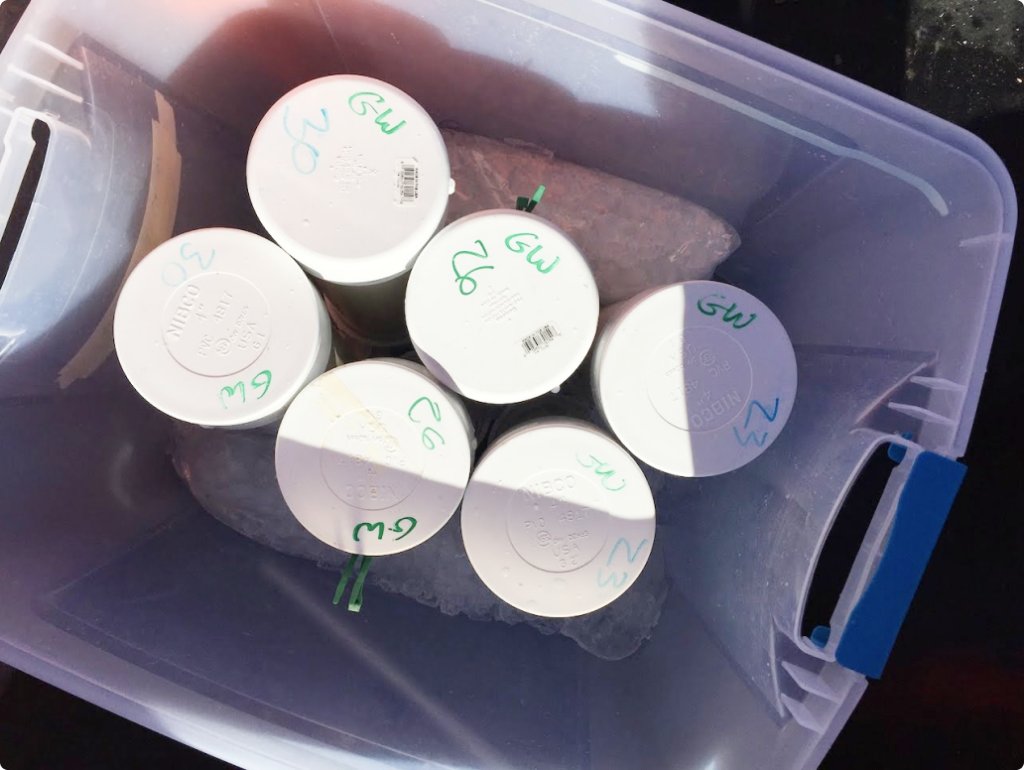Back to: Outplanting
When communicating with your hatchery, be sure to hash out the details of exactly how the seed spools will be transported from the hatchery to your farm site.
There are two main methods for packaging and transferring seed spools. Although the specifics of each system might differ based on the hatchery and the distance of travel, spools are generally either transported:
- Suspended in salt water, or
- Wrapped in damp paper towels in a chilled, insulated container
Transfer tube method
At the GreenWave hatchery, when transporting spools short distances by car, we suspend our spools in salt water using “transfer tubes.” We repurpose the 4” PVC tubes used for seeding spools during the inoculation process and insert a styrofoam ring at the bottom and top of the spool to keep the spool upright and from bumping the edges of the tube. The tube is then capped on either end and filled with chilled, filtered seawater. Spools can be left in this setup for 36 hours before outplanting; they just need to be kept cool in a chilled cooler, refrigerator, or in outdoor temperatures around 50°F. If the spool needs to be held for longer than 36 hours, the water can be replaced. The downside of this method is that, if the transfer tubes aren’t completely full of water, the turbulence can sometimes cause some of the blades to come off of the spools. The water weight also makes it difficult to travel with multiple spools, as they quickly become quite heavy.

Some large-scale and remote farm operations transfer their spools suspended in salt water using a metal or PVC grid-like system to suspend multiple spools in either a cooler or a fish tote full of chilled salt water. This option is great for spools that need to be transported long distances on a boat.
Paper towel method
Another common method for transferring spools is a “dry” transfer method. Using this method, the spools are removed from the tanks, wrapped in paper towels, spritzed with salt water, and placed in open plastic bags. Multiple spools can be prepared this way and then stacked together in an insulated box or bubble sleeve with an ice pack to keep them cool. This transport option is much lighter, making it easier to ship spools via overnight express shipping. However, spools cannot stay in this state for an extended period of time—24 to 36 hours, maximum.
